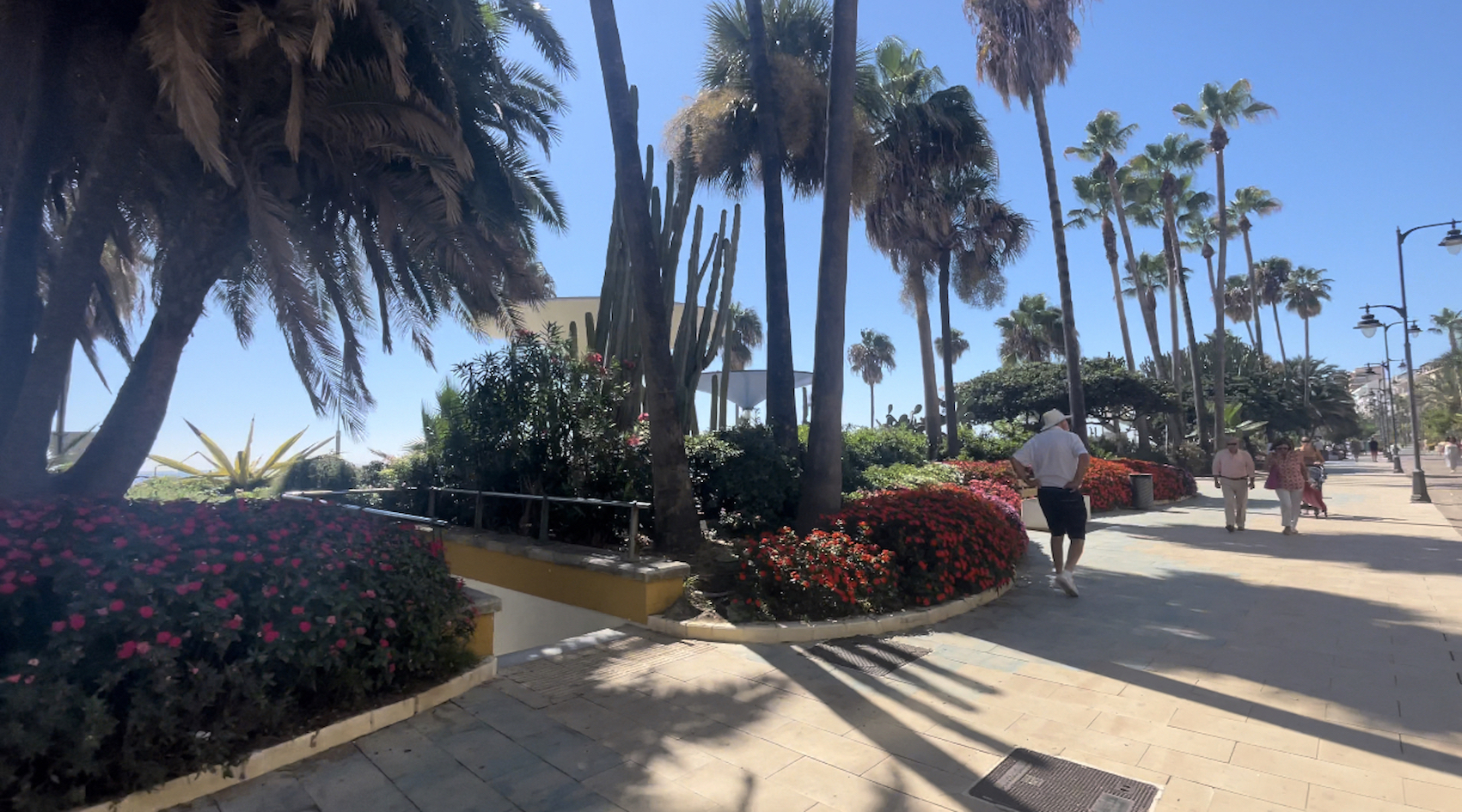Estepona: A Spanish Coastal Gem
Estepona is a charming municipality and city nestled in the province of Málaga, Andalusia, Spain. It graces the southwestern part of the province and is an integral part of the Costa del Sol Occidental region. Estepona is part of the homonymous association of municipalities and shares its name with the local judicial district.
Covering an extensive area of 137.5 square kilometers, Estepona stretches along 23 kilometers of picturesque coastline and extends inland to encompass a lush valley crisscrossed by streams, as well as a mountainous expanse dominated by the magnificent Sierra Bermeja, which reaches an impressive height of 1,449 meters above sea level at its peak, Los Reales.
Estepona has emerged as a favored international tourist destination, offering a wide array of accommodations, ranging from luxurious hotels to cozy guesthouses. Beyond its welcoming hospitality, Estepona boasts an array of leisure and sporting facilities, ensuring that every traveler finds something to suit their preferences.
One of Estepona’s standout features is its meticulously preserved historic center. Winding cobblestone streets adorned with vibrant flowers in countless pots and window boxes make it a true pleasure to explore.
So, who is José María García Urbano, and what has transpired since he assumed the role of Mayor in 2011?
José María García Urbano, the current Mayor of Estepona, was born in Coín 55 years ago. He completed his Law degree in 1982 and, remarkably, secured the position of Lawyer at the General Directorate of Registries and Notaries just three years later when he was only 24 years old. From 1985 to 1994, he served in various capacities within the Ministry of Justice, culminating in the role of Deputy Director General of Nationality and Civil Status. Over the years, he has also served as a property registrar in Fuengirola and Benalmádena and worked as a notary in Estepona for a span of thirteen years. Additionally, he has been involved in the field of education, serving as an associate professor of Private Law at the Distance University (UNED), teaching Civil Law at the UMA, and instructing on Commercial Law at Carlos III University.
In May 2011, García Urbano took office at Estepona’s town hall, leading the candidacy of the Popular Party and securing an absolute majority for his party with 17 councilors.
One notable aspect of José María García Urbano’s tenure as Mayor is that he continues to work part-time as a registrar. Therefore, upon assuming the role of Mayor, he made the decision to forgo the mayor’s salary, opting instead to allocate all available funds to ambitious public works projects planned within the municipality.
When García Urbano assumed office in 2011, he inherited a daunting debt of €300,000,000 from the previous administration. At that time, the financial situation of the town hall was dire, with police cars unable to patrol due to fuel shortages, students having to bring their own toilet paper to school due to the City Council’s inability to provide it, and even deceased individuals needing to be transported elsewhere for cremation as the local crematorium was no longer operationalJosé María García Urbano faced a monumental challenge when he took office as Mayor of Estepona in 2011. The dire financial situation and the staggering debt left behind by the previous administration required swift and effective action to restore the municipality’s stability and improve the lives of its residents.
Under García Urbano’s leadership, Estepona embarked on a remarkable transformation. Despite inheriting an enormous debt burden, his commitment to revitalizing the town was unwavering. He recognized the importance of financial prudence and resource allocation, and he took innovative steps to address the pressing issues facing the municipality.
One of García Urbano’s notable decisions was to maintain his part-time job as a registrar while serving as Mayor. By refusing to draw a salary from the mayor’s office, he demonstrated his dedication to maximizing available funds for the benefit of Estepona’s citizens. This approach allowed for a more efficient and responsible use of public resources.
García Urbano’s tenure also saw a substantial shift in municipal priorities. The town’s financial woes were gradually addressed through prudent fiscal management, which included reducing unnecessary expenditures and seeking cost-effective solutions. This newfound fiscal responsibility enabled the town to invest in critical infrastructure, public services, and community development projects.
One of the most visible aspects of Estepona’s transformation was the ambitious public works program initiated by García Urbano’s administration. The town underwent a remarkable physical makeover, with a focus on urban regeneration, beautification, and modernization. Streets, squares, and public spaces were renovated and adorned with colorful flowers and greenery, earning Estepona its nickname, “The Garden of the Costa del Sol.”
Estepona also became a leader in sustainability and environmental conservation under García Urbano’s guidance. Initiatives to protect and enhance the town’s natural beauty, including its coastline and Sierra Bermeja mountain range, were launched. Parks, gardens, and green areas were expanded, contributing to a healthier and more vibrant environment.
As the financial situation improved, essential services and facilities were enhanced. Schools, healthcare centers, and social services received increased support and resources, ensuring that the needs of the community were met. García Urbano’s commitment to education was evident in his efforts to create better learning environments for the town’s children.
In parallel with these efforts, Estepona’s cultural and recreational offerings flourished. The town became a hub for cultural events, festivals, and exhibitions, fostering a sense of community and promoting local talent. Sports facilities and activities also received attention, providing residents with more opportunities for healthy and active lifestyles.
José María García Urbano’s leadership extended beyond Estepona’s borders. He actively promoted the town as a premier tourist destination, attracting visitors from around the world. The influx of tourists bolstered the local economy and created jobs, contributing to the overall prosperity of the municipality.
In summary, José María García Urbano’s tenure as Mayor of Estepona has been characterized by visionary leadership, fiscal responsibility, and a deep commitment to improving the town’s quality of life. His ability to navigate and transform a dire financial situation into a thriving and beautiful municipality is a testament to his dedication and effective governance. Estepona’s remarkable transformation under his leadership serves as an inspiring example of what can be achieved through visionary leadership and a commitment to the well-being of the community.
Estepona also takes pride in its splendid beaches, where visitors can soak up the Mediterranean sun or take a refreshing dip in the sea. Among the many beaches that grace its coastline are the Rada Beach, Cristo Beach, Bahía Dorada, Galera Beach, Padrón Beach, El Castor River Beach, and Costa Natura Beach.
In addition to its aesthetic appeal, Estepona plays a vital role in the region’s agriculture. The area is known for its citrus fruits, tropical fruits, and a thriving fishing industry, which contribute significantly to the local economy while adding character to the town.
Throughout its rich history, Estepona has maintained close ties to its coastal location, witnessing naval battles and serving as a border town between different empires and kingdoms. Romans once inhabited this coastal area, and during the Middle Ages, it was a frontier region between Taifas and kingdoms.
The name “Estepona” is believed to have originated from the Arabic “Estebbuna,” although some theories suggest it might have roots in a Celtic settlement dedicated to the goddess Epona. Estepona is often affectionately referred to as “The Garden of the Costa del Sol” due to its meticulous urban revitalization efforts, which have seen more than 14 kilometers of streets and squares transformed with a distinct Andalusian flair, adorned with numerous flower-filled pots.
Estepona, known as “esteponeros,” has the colloquial nickname “culitos mojaos” (wet bottoms) due to its coastal setting and possibly the practice of wetting ripe figs with oil.
Its municipal coat of arms features a mountain, a tower, and a three-masted Latin sail ship, symbolizing its maritime heritage.
Estepona is located 82 kilometers from Málaga, 48 kilometers from Algeciras, and shares borders with neighboring municipalities. It’s blessed with a Mediterranean climate with mild temperatures year-round, influenced by the nearby Strait of Gibraltar.
The town’s geography ranges from fertile valleys to mountainous terrain, home to rare pinsapo trees. The marine ecosystem thrives with dolphins, various fish species, cephalopods, and crustaceans.
Estepona’s wildlife includes birds of prey, mammals like roe deer and Spanish ibex, and unique geological formations, including peridotites and pink and green tourmalines.
Its history dates back to megalithic tombs, Phoenician and Roman periods, Muslim rule, and various conquests. Defensive structures protected against pirate raids, and Estepona gained independence from Marbella in 1729.
The 19th century saw industrial development with resin extraction and sugarcane cultivation. Tungsten mining and tourism also played key roles in its evolution.
Estepona is known for preserving its cultural heritage while embracing modernization. It hosts cultural events, offers diverse gastronomy, outdoor activities, beautiful beaches, and lush gardens.
The town is committed to sustainability with green initiatives. Its blend of tradition and modernity makes it a unique destination on the Costa del Sol, inviting visitors to explore its historic streets, pristine beaches, and culinary delights while enjoying its warm Mediterranean climate.
Stefan Katafai specializes in providing a tailored approach to assist you in discovering the ideal property in Marbella that perfectly matches your budget and preferences. Leveraging his extensive network and profound market insights, Stefan undertakes a personalized search to uncover suitable options, whether your interest lies in a lavish villa, a beachfront apartment, or a charming townhouse.
The intricate terrain of the real estate market in Marbella can seem daunting, but with Stefan as your guide, you can confidently navigate it. He offers a wealth of comprehensive information about potential properties, encompassing their location, amenities, market valuation, and investment prospects. Stefan’s adeptness in negotiation and deal structuring ensures that you make informed choices and secure the most advantageous deals.
Beyond property exploration and acquisition, Stefan extends his assistance to various facets of the purchasing process. Whether you require support with property renovation, legal intricacies, or connections with trustworthy professionals such as lawyers, architects, and contractors, he possesses an extensive network of contacts to streamline your experience.
Should you be contemplating a real estate investment in Marbella, don’t hesitate to reach out to Stefan Katafai today to discuss your unique requirements and benefit from his expertise. With his personalized methodology and unwavering dedication to client contentment, Stefan is your guiding force towards a lucrative and prosperous investment in the captivating realm of Marbella.
Contact Information:
Stefan Katafai
Phone: +34 637 973742
Email: [email protected]
Website: Agent4stars.com






 if you wish to Buy, Sell, Charter,Rent
if you wish to Buy, Sell, Charter,Rent